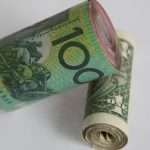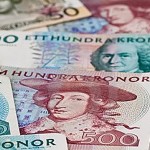Gold rose on Friday before the release of US jobs data but was headed for its worst weekly performance in nearly two months. Copper fell but was on track to post a hefty weekly gain, tracking a jump in oil prices.
Comex gold for delivery in April was up 0.16% at $1 264.7 per troy ounce at 10:34 GMT, shifting in a daily range of $1 269.0-$1 262.4. The precious metal lost 0.14% on Thursday and is headed for its biggest decline since mid-December.
Gold retreated following last months substantial gains as investors eyed an allegedly positive US employment report due later today. Robust data would outline an improvement in the US economy and thus ease speculations that the Federal Reserve will delay an interest rate hike. A potential increase in borrowing costs would dent demand for non-interest-bearing assets, including the yellow metal.
“A significantly lower job creation could support gold if it results in changes in the timing of Fed rate-hike expectations,” said HSBC analyst James Steel, cited by CNBC.
According to a poll by Reuters, the Labor Department’s report will show that US non-farm payrolls climbed by 234 000 in January, down from the 252 000 stated in the previous month, but still strong overall. Should that be the case, it would mark the twelfth consecutive month in which US employers added more than 200 000 jobs.
The data may also show that the unemployment rate remained unchanged at a multi-year low of 5.6%.
However, even if the employment report provides strong figures, Fed officials may still postpone an increase in interest rates as plunging oil prices continue to keep inflation below the targeted level of 2%.
The US dollar index for settlement in March was up 0.10% at 93.830 at 10:29 GMT, holding in a daily range of 93.865-93.680. The US currency gauge fell 0.46% on Thursday to 93.732. A stronger greenback makes dollar-denominated commodities more expensive for holders of foreign currencies and curbs their appeal as an alternative investment, and vice versa.
In contrast to Fed’s intended actions, policy makers across the globe have been launching easing efforts, hoping to fight deflation and spur growth.
The European Central Bank introduced an aggressive stimulus program in January, following a similar move from the Bank of Japan late last year. Denmark reduced its deposit rate on Thursday, one day after the People’s Bank of China cut the required minimum of reserves commercial banks must hold by 1%.
Meanwhile, gold has been supported by uncertainty surrounding Greece and its new government. Finance minister Yanis Varoufakis has met with officials from Germany, France and the UK in an effort to convince Europe to accept a proposed deal to swap Greece’s old debt with new bonds that would be repaid as the country’s economy expands.
However, the ECB announced yesterday that it would stop financially supporting Greece’s banks, sending their shares down the drain.
Assets in the SPDR Gold Trust, the biggest bullion-backed ETF, climbed 5.38 tons on Thursday to 773.31 tons, the highest since late September. Changes in holdings typically move gold prices in the same direction.
Copper
Comex copper for delivery in March traded 0.21% lower at $2.5895 per pound at 10:33 GMT, having shifted in a daily range of $2.6150-$2.5820. The contract rose 0.15% on Thursday to $2.5950, a third consecutive daily gain, and is up 3.8% so far this week.
In spite of weak underlying fundamentals, the red metal edged higher tracking a rebound in oil prices. Pricier oil raises the costs of copper mining and processing, while also triggering copper purchases for buyers of commodity index funds.
However, fears of slowing demand from top metals consumer China kept speculations for an extended rally curbed ahead of week-long holidays.
“Things tend to wind down ahead of Chinese New Year and were seeing that in a number of the markets such as steel and iron ore,” said for CNBC Morgan Stanley analyst Joel Crane. “It shouldnt be terribly different in copper.”
The Peoples Bank of China took another step of monetary easing earlier in the week by reducing minimum reserve requirements for banks by 1% to 19.5%. However, the market reacted only modestly as the move was not seen as a policy shift.
Australia & New Zealand Banking Group Ltd. slashed its 2015 price outlook for industrial metals on expectations for further economic headwinds for top consumer China. The bank cut its estimate for copper and tin by 19%, while lowering the outlooks for lead and nickel by 17%.
“With the likelihood of further weakness in economic growth in China, the headwinds for base metal markets are unlikely to ease,” the bank said in the report.
This comes after the Chinese economy expanded at the slowest pace since 1990 last year, while government data showed the first contraction in the country’s manufacturing sector in January in more than two years. Private data provided by HSBC and Markit Economics showed a second straight monthly contraction in activity at manufacturers, while services sector growth fell to a six-month low.
“Coppers bounce accompanied a bounce in the oil price. Clearly there is some correlation, so I would say its more of trading game than a fundamental game,” Crane said.





